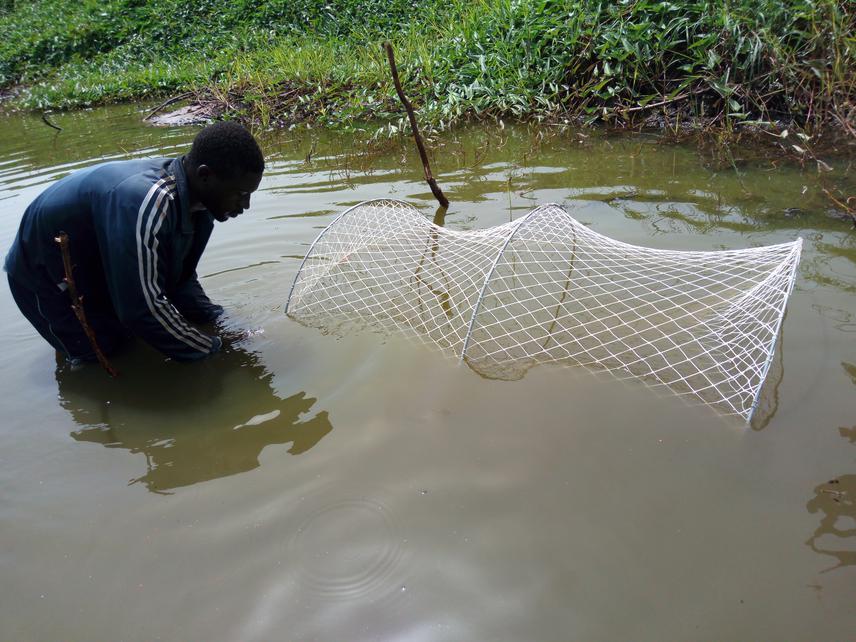Sulemana Bawa
Other projects
4 Apr 2024
Describing the Freshwater Turtle Community Structure of the Upper Volta Basin in Ghana; With Priority Search for the Nubian Flapshell Turtle
This project seeks to conduct ecological and social surveys to establish the current population status and ecological distribution of C. elegans within its known ranges in Ghana and to identify habitat conditions to which surviving populations are associated.

Local field assistant (Amad) helping in setting of hoop trap. © Sulemana Bawa
Cyclanorbis elegans is the most endangered African turtle (African Chelonian Institute). It has been recorded within the Sahelo-Sudanese belt of Africa (Baker et al., 2015). Listed Near Threatened by IUCN, 2015 (1996 assessment), the species is drafted critically endangered by IUCN/SSC TFTSG (2013 assessment) due to its increasing rarity. With growing threats to freshwater biodiversity in general (Darwall et al., 2011), C. elegans faces an extremely high risk of extinction in the immediate future due to lack of basic data on ecology, current distribution, population status and trade for bushmeat and traditional medicines (Diagne, 2010 and Luiselli, 2011). Species distribution is mainly known through obsolete literature and museum specimens with currently no quantitative data on any population and fewer than 5 live specimens recorded in the last 20 years (Baker et al., 2015).
In Ghana, the species is known to literature from three locations (Loveridge and Williams, 1957; Hughes, 1979). Ecological surveys to establish viable populations, ecological distribution and conservation action have therefore been highly recommended. Hence, this project will conduct surveys in the Volta Lake (Latitude 7.77/ Longitude -0.05) and Mole National Park (Latitude 9.53/ Longitude -1.95) to establish the species current population structure and ecological distribution within these known ranges.
This project will combine social and ecological investigations to ascertain the current population status and distribution of C. elegans. Interviews will be conducted among park rangers of the Mole and Digya National Parks and fisher folk and turtle trappers in selected fringed communities of the Volta Lake to gather social data on local knowledge of species status and distribution. Well-known fauna markets along the Volta Lake will also be visited to examine and record the sale of turtle products including C. elegans. For ecological assessment, turtles will be sampled principally by the use of baited locally constructed turtle traps (bubu traps) set in rivers in the Mole National Park and the Digya National Park section of the Volta Lake. Environmental variables including vegetation and water quality parameters will be taken for each site to examine habitat conditions to which surviving populations are associated. The project will also engage and sensitize park rangers of the Mole and Digya National Parks on the critical status of the species and build their capacities for species population monitoring. Similarly, the project will sensitize and train selected turtle trappers on the Volta lake to serve as local ambassadors for C. elegans conservation.